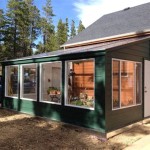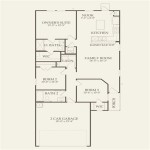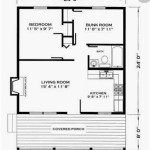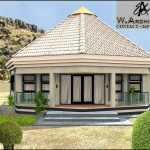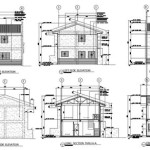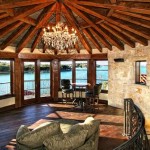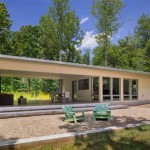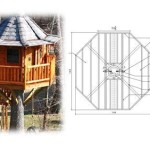Southern Exposure House Plans: Optimizing Sunlight and Comfort
Southern exposure house plans prioritize the placement of windows and living spaces to maximize sunlight from the south. This design strategy offers numerous benefits, particularly in colder climates, contributing to passive solar heating, reduced energy costs, and improved natural lighting.
The core principle of southern exposure house plans revolves around capturing the low-angle winter sun. During these months, the sun's arc is lower in the sky, allowing sunlight to penetrate deeper into the home through south-facing windows. This natural heat gain can significantly reduce reliance on artificial heating systems.
Conversely, during the summer months, the sun's higher arc allows for easier shading of south-facing windows. Overhangs, awnings, and strategically planted deciduous trees can effectively block the high summer sun, preventing overheating and reducing the need for air conditioning. This seasonal variance in solar gain is a key advantage of southern exposure design.
The benefits of a southern exposure extend beyond energy efficiency. Increased natural light contributes to a brighter, more cheerful living environment, positively impacting mood and well-being. Natural light also reduces the need for artificial lighting, further lowering energy consumption and associated costs.
Several key design elements are crucial to maximizing the effectiveness of southern exposure house plans. Large, strategically placed windows on the south facade are paramount. These windows should be properly sized and positioned to capture the winter sun while allowing for effective shading during the summer.
Thermal mass plays a significant role in storing and releasing solar heat. Materials like concrete, brick, and tile absorb solar energy during the day and slowly release it at night, helping to maintain a comfortable temperature and reduce temperature fluctuations.
Insulation is another critical factor in maintaining energy efficiency in southern exposure homes. Proper insulation in walls, roofs, and floors minimizes heat loss during the winter and heat gain during the summer. This ensures that the captured solar heat is retained within the home and prevents unwanted temperature changes.
Landscaping also plays a crucial supporting role. Deciduous trees planted on the south side provide shade in the summer while allowing sunlight to penetrate during the winter when their leaves have fallen. Evergreen trees on the north side can act as a windbreak, further reducing heat loss.
When considering a southern exposure house plan, careful consideration of the local climate is essential. While these plans are highly effective in colder climates, they may require additional design considerations in hotter climates to prevent overheating. Proper ventilation and shading become even more critical in warmer regions.
The slope of the land can also influence the effectiveness of a southern exposure design. Ideally, the land should slope gently towards the south to maximize solar gain. Homes built on north-facing slopes may require additional design adjustments to optimize solar access.
Orientation is not the only factor to consider when designing for southern exposure. Window placement, size, and type are equally important. High-performance windows with low-E coatings can further enhance energy efficiency by reducing heat transfer.
The placement of interior rooms should also be considered in conjunction with southern exposure. Living spaces, such as living rooms and family rooms, are ideally located on the south side to benefit from the natural light and warmth. Bedrooms and other spaces requiring less light can be located on the north side.
While the initial cost of implementing a southern exposure design might be slightly higher due to the use of high-performance windows and other energy-efficient materials, the long-term savings in energy costs can significantly offset this initial investment.
Furthermore, the intangible benefits of increased natural light, improved comfort, and a reduced environmental footprint contribute to the overall value and appeal of a southern exposure home.
Different architectural styles can be adapted to incorporate southern exposure principles. From traditional farmhouses to modern minimalist designs, the core concepts of maximizing southern light and utilizing thermal mass can be integrated into a variety of aesthetics.
Working with an experienced architect or designer who understands the principles of passive solar design is crucial for successfully implementing a southern exposure house plan. They can help optimize the design for the specific climate, site conditions, and homeowner needs.
Beyond the individual home, southern exposure principles can also be applied to larger-scale developments and urban planning. Orienting buildings to maximize southern exposure can contribute to greater energy efficiency and sustainability at the community level.
The increasing focus on sustainable building practices and energy efficiency has brought renewed attention to the benefits of southern exposure house plans. By harnessing the power of the sun, these designs offer a path towards creating comfortable, energy-efficient, and environmentally responsible homes.

Southern Home Plans 4 Bedrooms A Wrap Around Porch

Southern House Plans For A 4 Bedroom Farmhouse Style Home

Southern Home Plans 4 Bedrooms A Wrap Around Porch

Southern House Plans For A 4 Bedroom Farmhouse Style Home

House Plan 5303 Southern Exposure Country

Southern House Plans For A 4 Bedroom Farmhouse Style Home

House Plan 5303 Southern Exposure Country

House Plan 5303 Southern Exposure Country

Plan 25 Hpp 28316 House Plans Plus

Small Space Lessons Floorplan Solutions From Geoff S Southern Exposure Studio Apartment Floor Plans Layout Design

